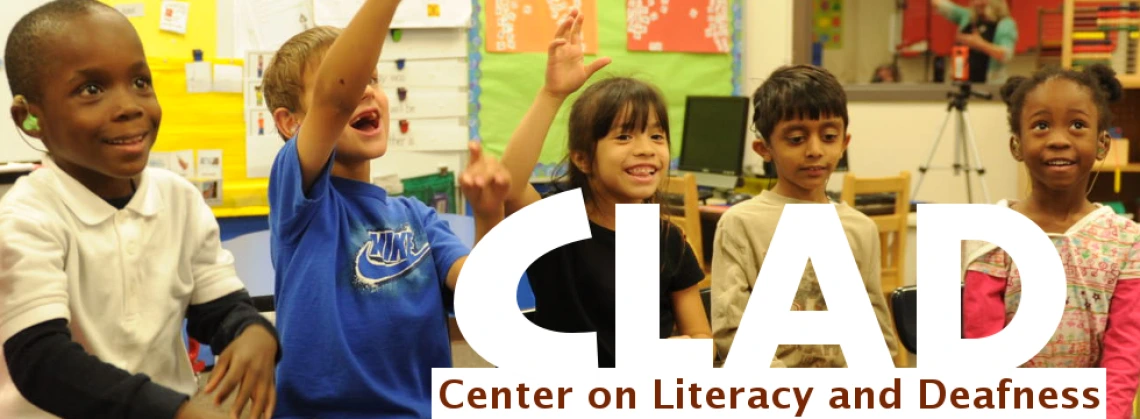
Explicit Contextualized Vocabulary Instruction-Deaf/Hard of Hearing (ECVI-DHH)
Explicit Contextualized Vocabulary Instruction - DHH (ECVI-DHH) is an approach to content area vocabulary instruction for use with young Deaf and Hard of Hearing (DHH) students. The explicit and contextualized instructional strategies expose students to new words and gives students practice in using the words expressively. The website will help professionals better understand the purpose of each component of instruction, the steps needed to implement the components, and suggestions for planning their own units of instruction using ECVI-DHH.
ECVI-DHH is adapted from PAVEd for Success: Building Vocabulary and Language Development in Young Learners by Hamilton and Schwanenflugel (2013). The primary concept behind this approach to vocabulary instruction is that students need multiple exposures to a word in order to learn and use the word. Researchers who have studied vocabulary acquisition in young hearing students suggest that they need between 12 to 40 exposures to a new word before they learn it (McKeown et al., 1985; Reutzel & Cooter, 2004). The ECVI-DHH instructional program described on this website gives professionals the tools to provide young DHH children repeated exposures and opportunities to use new content-area words that they may not learn incidentally. Learning vocabulary enhances language comprehension which, in turn, enhances reading comprehension.
Center on Literacy and Deafness
The Special Education Research and Development Center on Reading Instruction for Deaf and Hard of Hearing Students of the Institute of Education Sciences was awarded to a team of researchers led by Georgia State University.
This project aims to identify child and instructional factors that affect reading growth in this population and to develop individualized interventions specifically designed for deaf or hard of hearing (DHH) struggling readers in grades K-2. The award provided funding to create the National Research and Development Center on Literacy and Deafness (CLAD), the first of its kind to focus on deaf children.
The University of Arizona is one of four universities that have collaborated in the development of several promising literacy interventions including Vocabulary for Success, Foundations for Literacy, and Fingerspelling Our Way to Reading.
Additional information about CLAD can be found at The Center on Literacy and Deafness website.
The research reported here was supported by the Institute of Education Sciences, U.S. Department of Education, through Grant R24C120001. The opinions expressed are those of the authors and do not represent views of the U.S. Department of Education.
Why Vocabulary?
The benefits of vocabulary instruction and learning are numerous for all children, but particularly those who are Deaf or Hard of Hearing (DHH). Many DHH children experience slow vocabulary growth which contributes to language and literacy delays. DHH children are often limited in the amount and type of vocabulary they know. For example, many young DHH children’s vocabulary consists of informal names and social words. A large, varied vocabulary contributes to reading comprehension, the development of higher order thinking skills, a deeper understanding of content areas, and the ability to quickly learn new words. It is important that teachers of DHH students purposefully plan instruction to increase students’ vocabulary knowledge at every grade level.

